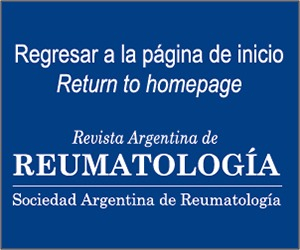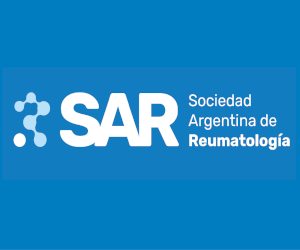Hemicorporeal morphea
Study of seven cases
Abstract
Introduction: Hemycorporal morphea is an extremely infrequent disor-der. Its limits and relationship with facial hemiatrophy and lineal mor-phea remains not truly understood. Objective: To define its characteristics to let early acknowledge of this disorder trying to avoid the severe course of the disease.Material and method: Seven cases of hemychorporal morphea (six women and one man) six years to thirty five years-old studied between 2000-2009 in our Department of Dermatology were analized. The pres-ence of sclerosis or atrophy, the age of consultation and onset of dis-ease, site of initiation, ipsylateral or contralateral involvement, presence of contractures, dystonia or myoclonus, loss or diminished vissual func-tion, dry eye, and laboratory findings, neurological examination, MR and CRL findings were reported here.Results: Five cases started on the lower or upper limb, three out of them were sinchronic with other body area. Three cases started on the face or trunk, all of them simultaneously with a limb involvement. Rapid spreading (days or weeks) was characteristic of this disorder. It followed a course spreading up or down. Sclerosis seemed to be prevalent in most, but one case only exhibited atrophy. Contralateral lesions were seen and one case was a systemic sclerosis. Ulcer arose on the affected lower limb (in one case with moderate levels of antiphospholipids an-tibodies in one out of three determinations). Dystonia contractures and myoclonus were reported by all patients. Small areas of demyelinization in MR, and olygoclonal bands in CRL were present in one patient; this case exhibited only atrophy and a doubtful frontal sclerosis. Two cases showed slower esophagic transit. Dry eye was associated in two cases also. In the laboratory investigations hyperglobulinemia and positivity for RF, ACLA, FAN were found in the seven cases, diminished.fractions of complement in two. Only one case tested positive for Scl70.Conclusions: This particular form of morphea follows a singular course and behaviour: it usually starts as a lineal morphea with a limb involve-ment, shows rapid spreading, often includes neurological involvement or others, and exhibits laboratory unspecific findings. Cutaneous atro-phy may be the only manifestation, and early treatment may arrest tem-porarely the progression of cutaneous involvement and /or neurologic symptoms in the early follow-up.References
I. Hassan M.l, Nudenberg B, Corbella MC, Endre J, García Diaz ER, Hernandez MI, Melloni ME, Palat-nik S, Roquel L, Ruiz Lascano A, Schroh R, Troielli P, Saenz C,Saposnik M, Staiger H, Stringa O. Consenso de Esclerodermia. S.A.D. 2007.
II. Zancanaro PC, Isaac AR, García LTT, Costa IM. Localized scleroderma in chidren. Clinical, diagnostic and therapeutic aspects. An Bras Dermatol 2009;89:329-30.
III. Nudenber B. Esclerodermia. Controversias clínicas. Rev. Arg. Dermato 1993;74:59-63.
IV. Tollefson MM, Wihtman PM. Coup de sabre morphea and Parry-Romberg syndrome: a retrospective review of 54 patients. J Am Acad Dermatol 2007;56:257-263.
V. Peterson LS, Nelson AM, Su WP, Masson T, O’Fallon WM, Gabriel SE. The epidemiology of morphea (lo-calized Scleroderma) In Olmsted County 1960-1993. J Rheumatol 1997;24:73-80.
VI. Rocken M, Ghoreschi K. Morfea y liquen escleroso. En: Bolognia JL, Jorizzo JL y Rapini RP. Dermato-logía. Volumen 2 Capítulo 97 Elsevier Madrid 2004, pág.1503-1517.
VII. LI SC, Liebling MS. The use of doppler ultrasound to evaluate lesions of localizade scleroderma. Curr Rheumatol Rep. 2009;11:205-211.
VIII. Maurer J, Knollmann FD, Schlecht I, Terstegge K, Felix R. High resolution magnetic resonance imaging in patients with facial haemiatrophy. Acta Derm Ve-nereol 1999;79:373-375.
IX. Hassan ML, Tiscornia J, Sandoval W, Gurfinkel A, Schroh RG. Sindrome de Parry Romberg con y sin esclerodermia. Rev. Arg. Dermatol 1994;44:7-14.
X. Terstegge K, Kunath B, Felber S, Sopeciali JG, Henkes H, Hosten N. MR of brain involvement in progressive facial hemiatrophy(Romberg disease) reconsideration of a syndrome. Am J Neuroradiol 1994;15:145-150.
XI. Cori RC, Clayman DA, Faillace WJ, McKee SW, Gama CH. Clinical and radiologic findings in pro-gressive facial hemiatrophy. Am J Neuroradiol 1997;18:751-757.
XII. Kister I, Inglese M, Laxer RM, Herbert J. Neurologic manifestations of localized scleroderma:a case report and literature review. Neurology 2008;71:1538-1545.
XIII. Zulian F, Vallongo C, Woo P, Russo R, Ruperto N, Harper J, Espada G, Corona F, Mukamel M, Vesely R, Musiej-Nowakowska E, Chaitow J, Ros J, Apaz MT, Gerloni V, Mazur-Zielinska H, Nielsen S, Ull-man S, Horneff G, Wouters C, Martini G, Cimaz R, Laxer R, Athreya BH; Juvenile Scleroderma Working Group of the Pediatric Rheumatology European So-ciety (PRES).Localized scleroderma in childhood is not just a skin disease. Arthr Rheum 2005; 52:2873-2881.
XIV. Arkachaisri T, Fertig N, Pino S, Medsger TA jr. Serum autoantiboides and their clinical associations in patients with childhood and adult-onset linear scleroderma. A single-center study. J Rheumatol 2008;35: 2439-2444.
XV. Planas J, Cervelli V, Pontón A, Planas G. Superviven-cia a largo plazo de los injertos grasos. Cir Plastica Iberolatinoamer. 2006;32:17-24.
XVI. Dajani ZA, Adams BB. Blaschkoid morphea ari-sing in a middle-aged man. J Am Acad Dermatol. 2011;64:1012-1014.
XVII. Noda S, Asano I, Ashida R, Tornita N, Kawashima T, Sato S. Localized scleroderma in coup de sabre exacerbated during pregnancy following by pos-partum development of rheumatoid arthritis.Euro J Dermatol 2011;21:441-2.
XVIII. Hersch A., Von Sheven E, Yelin E Outcomes of childhood-onset rheumatic diseases. Nat Rev Rheu-matol. 2011;7:290-295.
Copyright (c) 2013 Argentine Journal of Rheumatology

This work is licensed under a Creative Commons Attribution-NonCommercial-NoDerivatives 4.0 International License.










